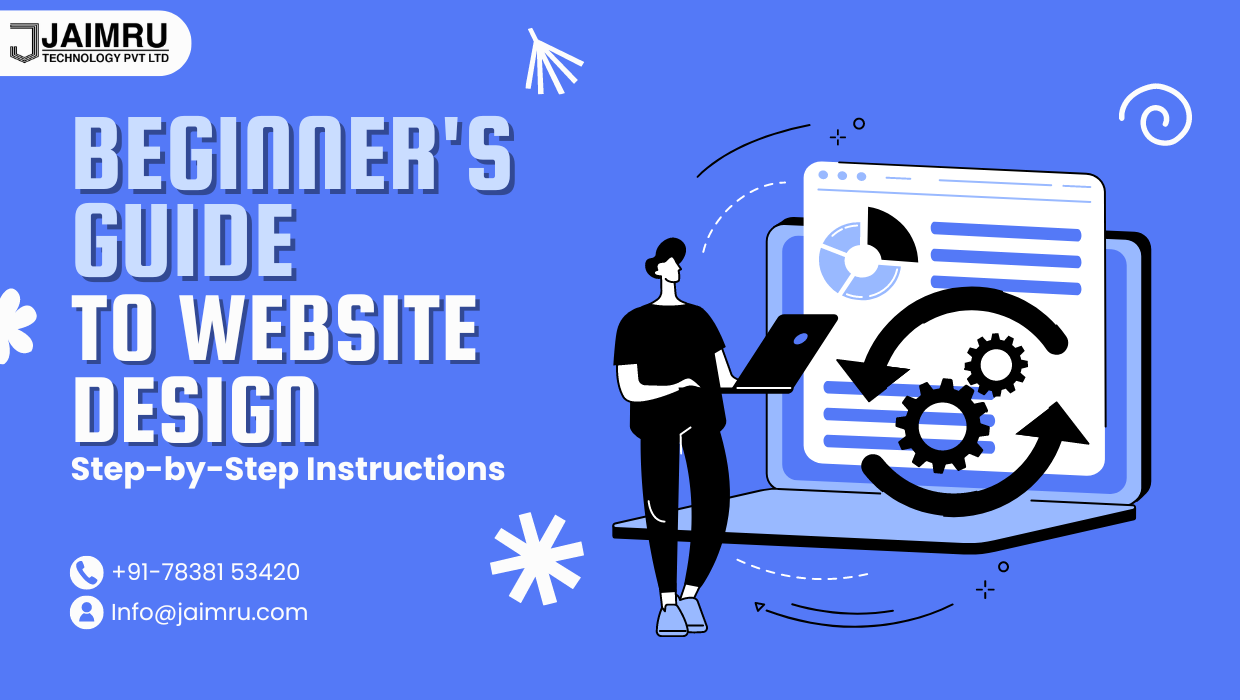
Posted On : 18-06-2024 13:48:00
Designing a website may seem like a daunting task, especially for beginners. However, with the right guidance and approach, creating a website can be an exciting and rewarding experience. In this beginner's guide to website design, we'll break down the process into simple, easy-to-follow steps, allowing anyone to create a professional-looking website with minimal hassle.
Before diving into the design process, it's essential to define the purpose of your website and identify your target audience. Ask yourself questions like:
- What do I want to achieve with my website?
- Who is my target audience, and what are their needs and preferences?
- What key messages do I want to convey to my audience?
By clarifying your goals and audience, you can tailor your website design to meet their needs effectively.
There are various platforms available for building websites, each with its own strengths and features. For beginners, user-friendly platforms like WordPress, Wix, and Squarespace are excellent choices. These platforms offer intuitive drag-and-drop interfaces, pre-designed templates, and built-in features that simplify the website design process.
Once you've chosen a platform, browse through the available templates and choose one that aligns with your goals and aesthetic preferences. Templates provide a framework for your website layout and design, making it easier to customize and personalize according to your needs. Look for templates that are responsive, visually appealing, and easy to navigate.
With your template selected, it's time to customize your website's design to make it your own. Start by adding your logo, brand colors, and imagery to reflect your brand identity. Then, customize the layout, fonts, and styling to create a cohesive and visually appealing design. Most website builders offer customization options that allow you to adjust colors, fonts, and other design elements with ease.
Content is king when it comes to website design. Take the time to create high-quality, engaging content that resonates with your audience. This includes compelling copy, captivating images, and multimedia elements such as videos and slideshows. Organize your content in a clear and logical manner, making it easy for visitors to find the information they're looking for.
In today's mobile-first world, it's crucial to ensure that your website is optimized for mobile devices. Most website builders offer responsive design features that automatically adjust your website layout to fit different screen sizes. However, it's essential to preview your website on various devices to ensure that it looks and functions correctly on smartphones and tablets.
Before launching your website, thoroughly test it to identify any issues or errors. Check for broken links, typos, and formatting inconsistencies across different browsers and devices. Solicit feedback from friends, family, or colleagues to get fresh perspectives on your website's design and usability. Once you're confident that everything is working smoothly, it's time to launch your website and share it with the world.
Creating a website is just the beginning. To keep your website relevant and engaging, it's essential to maintain and update it regularly. Regularly review your content, update information, and make any necessary adjustments to your design to keep it fresh and up-to-date. Monitor website performance metrics such as traffic, engagement, and conversions to identify areas for improvement and optimization.
Designing a website for beginners doesn't have to be intimidating. By following these simple steps and leveraging user-friendly website building platforms, anyone can create a professional-looking website with minimal hassle.
Remember to define your goals and audience, choose the right platform, customize your design, create compelling content, optimize for mobile, test thoroughly, and maintain and update regularly. With patience, creativity, and a willingness to learn, you can create a website that effectively communicates your message and connects with your audience.
Copyright 20-2025 Jaimru Technology Private Limited | All Rights Reserved.